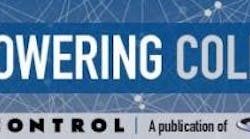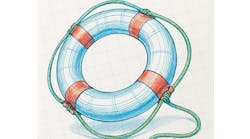The greatest innovations, from the wheel to the Internet, can't deliver their benefits if no one picks them up and uses them. Unfortunately, chipping away at human habits and breaking through resistance is far more difficult than creating those new inventions in the first place.
Undeterred by these obstacles, Emerson Automation Solutions is following up on its recent launches of Project Certainty, Operational Certainty and the Plantweb digital ecosystem to help users to address the human and social shifts they and their personnel will need to make to adopt and benefit from all of these new technical solutions.
"We asked our customers, and they're saying maybe it's not the technology. They're asking whether they have the people and culture needed to create and sustain change," said Mike Train, executive president, Emerson Automation Solutions. "Recent performance gains are smaller, and competition is getting tougher, but we're learning that you can't 'efficiency' your way to top-quartile performance. Top performers invest in people and technology because only people can make the right decisions to achieve the right outcomes. People are the key."
Top-quartile behaviors
Emerson's leaders reported they're ready to help customers to encourage their staffs to adopt the best practices and behaviors of today's top-quartile performers, which will be needed to implement more useful technologies in the future. Emerson Chief Technology Officer Peter Zornio detailed these efforts at the 2017 Emerson Global Users Exchange this week in Minneapolis.
"A ton of technology is available, but we must also focus on what it takes to bring that technology to life and how to embed those changes in the culture of an organization to benefit it and its members," said Zornio. "We did some research and found that the behaviors of top-quartile performers include linking collaboration strategies to business objectives and metrics; demanding a culture of accountability; embedding expertise in work processes and applications; and optimizing with real-time data."
[sidebar id =1]
Zornio added that process-control users and organizations performed a similar digitalization of their applications when they implemented early, digital, closed-loop process controls in the 1970s-’80s. "They got help putting in sensors to collect real-time data, run it through control algorithms to create outputs, move valves and start pumps and repeat the process in a closed loop," he explained. "However, these same methods can now be used for reliability, energy consumption, safety and all the other applications that haven't used real-time data and codified performance before."
Zornio added that today's digital transformation can automate much of the routine busywork that employees had to do before and free them to perform more creative tasks that make better use of their critical-thinking skills. "They can go from the dull, dirty, dangerous and distant jobs to those that are engaged, clean, safe and desirable," said Zornio. "This doesn't eliminate jobs. It upgrades jobs to more value-added, intellectual tasks."
Zornio reported that Emerson has identified five essential competencies that process-industry organizations and their people will need to make to benefit in the era of digital transformation.
- Automated workflow eliminates repetitive tasks and streamlines standard operations to focus personnel on exceptions and opportunities that require human intervention. Emerson solutions in this area include AMS ARES, DeltaV SaaS, DeltaV Logbooks and Smart Commissioning.
- Decision support leverages analytics and embedded expertise to provide actionable insights that reduce complexity and enable faster decision-making and higher quality. Emerson solutions for it include DeltaV Live, digital twin, Plantweb Advisor and Plantweb Insight.
- Workforce upskilling consists of approaches that empower workers to acquire knowledge or experience faster and more effectively to support higher-level and collaborative decision-making. Emerson expertise in this area include remote expert assistance, operator training simulators, interactive plant environment and the Control Performance Academy.
- Mobility involves secure, on-demand access to information and expertise, regardless of location, enabling collaborative workflows through shared, relevant information. Emerson's solutions here include AMS ARES Asset View, AMS Trex and DeltaV Mobile.
- Change management combines strategies, processes, tools and expertise in the right combination to simplify and accelerate the institutionalization of operational best practices. Emerson solutions for it include its Operational Certainty Consulting Group, "Jumpstart" Engagement Program and Emerson Change Management Methodology.
"Once routine tasks are automated, decision support provides analysis and workflow tools," added Zornio. "Upskilling gives people access to all of today's expertise on demand, while mobility sends that expertise to wherever they need it. However, change management is going to be the hardest because it will require organizations and their members to not only make changes, but stick with them over the long term. Research shows that 47% of companies report that company culture is the biggest challenge to their operational efficiency program. To help our customers tackle this problem, we're establishing our Operational Certainty Consulting Group to help them get through this change-management journey. Emerson is ready to help with all aspects of these efforts."
Zornio added that jumpstarting digital transformation also consists of five primary activities, including:
- Alignment—developing stakeholder readiness with goal alignment, culture, operations and infrastructure;
- Justification—building the business case and opportunity prioritization with performance benchmarks, workflow and return on investment (ROI) analyses;
- Design—delivering architecture and functional specifications with infrastructure, gap and solution analyses for management of change;
- Deployment—performing program implementation of processes with deliverables, work streams and resource plans; and,
- Sustainability—enabling program management with key-performance-indicator (KPI) tracking and scaling up as needed.
"We're here to help for the long haul, and we have the deep domain expertise to make it happen," said Zornio.






